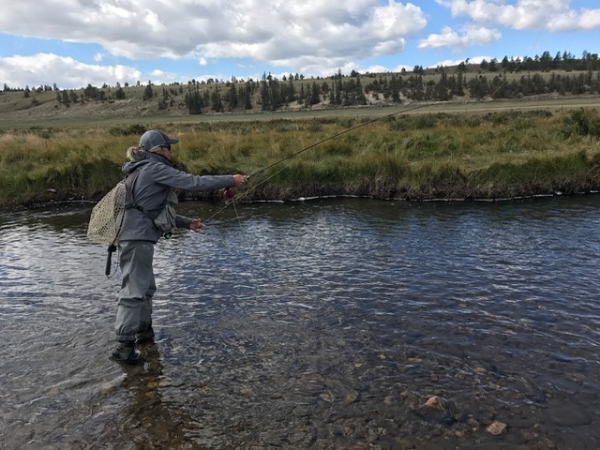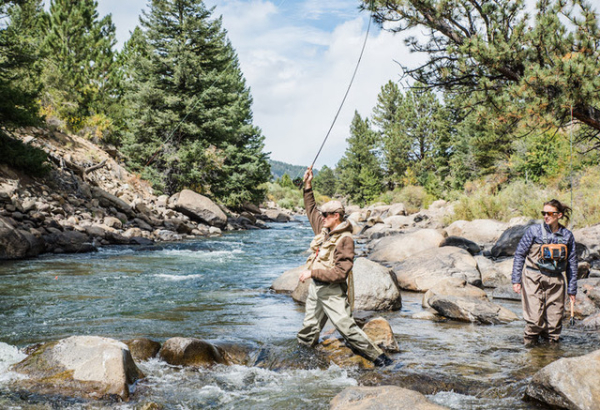
We said last week in our column on New Mexico stream access that Colorado and Montana are among the Rocky Mountain States that do not allow wade-fishing anglers to stay inside the high-water marks of rivers and trespass on private lands.
That was wrong.
While Colorado does have such a rule, Montana does not.
Montana law gives recreationists the right to use rivers and streams for water-related recreation within the high water marks, including floating and wading. It does not allow them to enter posted lands bordering those streams or to cross private lands to gain access to streams, but wading the stream bed is permitted.
Here’s a summary of the rules in the other Mountain States.
Arizona does not allow access to most small streams without landowner permission. On the Colorado River and waters with federally owned streambeds, the public has the right to boat, fish and recreate, but not on any waters not deemed “navigable”.
Colorado allows anglers to “float the river” in areas that pass through private land, but touching the riverbed is considered trespassing. However, there are no current state laws or regulations that define navigability, and there is at least one law suit over wadefishing access pending.
Idaho allows wadefishing within the high water marks. The rule says: “You must stay within the normal high-water marks of the stream unless you have landowner permission to get out on the bank, or have no other means of getting around an obstruction in the stream (such as a fence or diversion dam).”
New Mexico formerly defined the bed of any non-navigable waterway on private lands as being no-go, and hardly any rivers except the Colorado are navigable in this very dry state. However, the New Mexico Supreme Court ruled last year that anglers there can legally walk stream beds and banks “within historic high water marks” of the state’s rivers for fishing access. The U.S. Supreme Court just recently refused to take up a challenge to the ruling, which means it stands as law.

Utah has a more complex rule: The law does not allow recreational water users (including anglers, kayakers, tubers, hunters and others) to walk on the private bed of a public water body. This means that if you are fishing or recreating in public water that flows over private property closed to trespass, you may not walk on the land beneath the water without obtaining landowner permission. The current law allows you to float on the surface of the water, even if you're floating over private property that is closed to trespass. It also allows you to fish while floating. Your right to float only applies if the water has sufficient width, depth and flow to float your vessel. You can’t stop, anchor or get out on the shore. Landowners close their property to trespass by posting a notice or otherwise communicating that access is prohibited. Irrigated pastures, cultivated lands and certain fenced areas are presumed closed to trespass.
Wyoming allows boaters to float across private lands and portage around features such as logjams, fences and diversion structures. However, wading and anchoring on private lands without permission of the landowner constitute a trespass violation. It is the responsibility of the floater to know if lands adjoining the waterway are public or private. Some of Wyoming’s navigable waters flow through areas where there are both public and private lands. Anglers unsure of the public land status next to waters may wish to consult public land maps printed by the Bureau of Land Management.
Bottom line is the easy way to fish the Rocky Mountain States is to stick to the vast areas where trout water flows through public lands. But, if you study the regulations, there are many private water opportunities as well, and these will often offer better fishing and less competition than the designated public lands.
— Frank Sargeant
Frankmako1@gmail.com